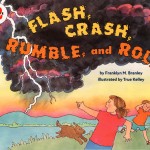
Readers & Thinkers: The 2009 Nobel Prize in Economics. Make or Buy?
Posted by ludw1086 on Sep 7, 2012 in Readers & Thinkers | Comments Off on Readers & Thinkers: The 2009 Nobel Prize in Economics. Make or Buy?Dear All:
Well, who won?
The Nobel prize for economic sciences for 2009 was announced today, October 12, 2009. It went to two people Oliver Williamson and Elinor Ostrom.
Williamson is 77 years old, born in Superior, Wisconsin and Professor at UC Berkeley. He obtained his BS from MIT and his Ph.D. in economics from Carnegie Mellon University.
Ostrom is 76 years old, born in Los Angeles, CA and Professor at Indiana University. She obtained her BA and Ph.D. in political science from UCLA.
Oliver Williamson was my 2nd pick for this year’s Nobel award. I have never heard of Elinor Ostrom before and she is not even formally an economist – she is a political scientist (note: some of my friends in environmental economics were aware of her).
I expected Williamson to win for his contributions to Industrial Organization. I had also thought the Nobel committee might wish to give some award with a politically biased motivation, like environmental economics. I think they achieved that with Ostrom, since a lot of her work has to do with issues related to the environment.
So what did this guy and gal do that makes them so Noble?
The Nobel committee wrote that Williamson received the prize “for his analysis of economic governance, especially boundaries of the firm”; and Ostrom “for her analysis of economic governance, especially the commons.” The common link was economic governance. That is, how an institution, corporation, or any entity is governed.
Williamson focused on one particular aspect of governance: why might firms vertically integrate in an industry rather than operating as two separate firms? Practitioners may be more familiar with the term “make-or-buy” or “buy-or-build”. For example, if I have a tire company, do I need to also own the rubber tree plantation or can I just buy rubber from the plantation? Vertical integration occurs when one company owns both the tire factory and the rubber plantation. Other examples are iron ore mining and steel production (e.g. Carnegie Steel) or coal mining and electricity production.
Williamson argued that when transaction costs are high between two related processes, it’s better to integrate into one firm. Transaction costs can be high due to complexity or when physical and human assets are strongly relationship specific (like with coal and energy production). This work undermined the other commonly held belief that large, integrated firms were integrating for monopoly power. Many empirical tests of the theory of transaction cost vertical integration have found it to hold up well in practice.
Ostrom focused on one the governance issues associated with common property. Think of a pond in a small village. Every individual has an incentive to fish for their own private benefit, even though they may eventually deplete the pond and leave the entire village without fish. Many problems of this sort deal directly with the environment, since private mechanisms may lead to outcomes that are worse for the group as a whole, especially if we include future generations in that group.
Ostrom did not do any formal theory work. Instead she did both experimental laboratory work and collected field studies and asked “What are the structures that lead to successful management of common pool structures?” (In the example above, what leads to the group not depleting the pond of all its fish?) She wrote down the traits that seemed to work across different forms of organization that were successful at this task.
One of the most interesting traits she documented was that “…monitoring and sanctioning should be carried out either by the users themselves or by someone who is accountable to the users.” Her finding reminds me of the time I attempted to illegally park in a loading zone in Switzerland while I picked up something at a store. An old woman stood on the parking spot waiving her cane at me and repeating “Das ist verboten! Das ist verboten!” Even though I circled around the block hoping she would leave, she wouldn’t go away. I finally had to give up and park somewhere else (legally).
So what about the Nobel choice?
The Nobel committee did manage to get in an environmental pick. Much of Ostrom’s work is related to the environment. In fact, she is currently a Professor at the School of Public and Environmental Affairs. And was the choice also a nod in favor of the Swedish style of economic governance? In Ostrom’s work, she found that the most successful management of common property was somewhere in between total privatization and total public ownership.
Did the committee leave any people in the dust this time? Well, I don’t think so. I think the Nobel committee is going to stretch out the Nobel awards in the future (fewer threesomes), partly because the candidate list is getting smaller. Also, it may mean some more surprising awards based on political motivation.
So is that it?
Economic governance is an important topic. I think there is much more research to be done to understand the most efficient way to organize individuals, to organize firms and to organize nations . We are still a long way off from perfection as a society.
For more information on the winner:
http://nobelprize.org/nobel_prizes/economics/laureates/2009/
For an interview with Williamson, go to:
http://elsa.berkeley.edu/~train/interviews.html
Finally, congratulations to these winners and their pursuit of knowledge.
Enjoy!
Ludwig






